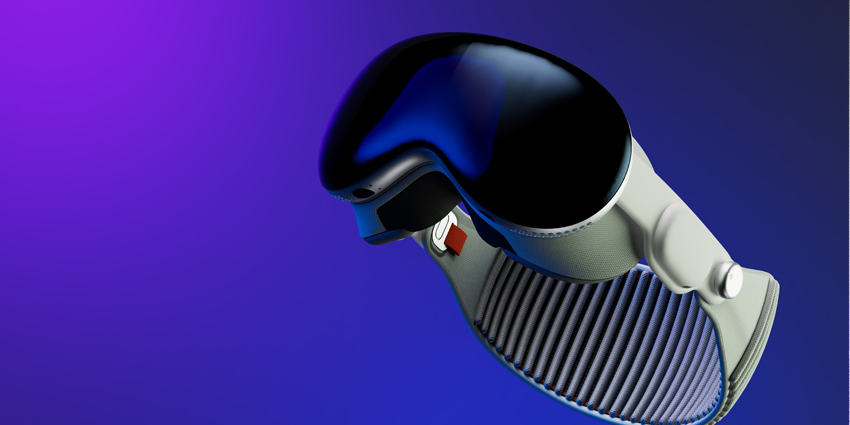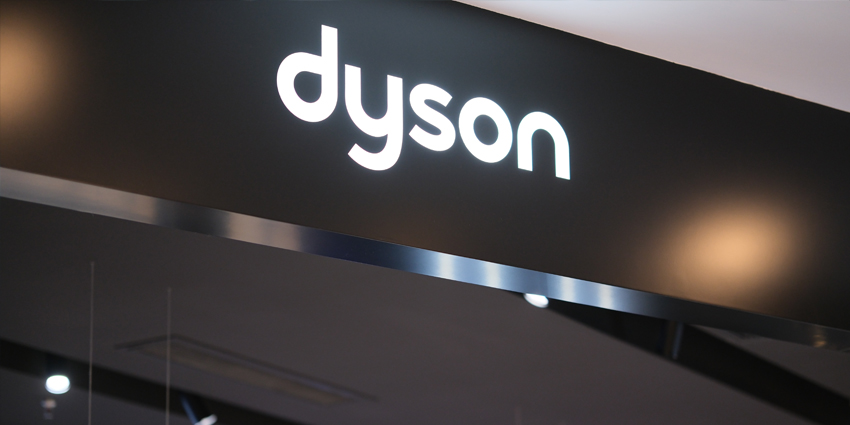Virtual, augmented, and mixed reality (VR/AR/MR) promise to change how the world interacts with computing technology, and smart glasses are just one component of this transformation.
As the rise of XR hardware continues, the tech space gives consumer and enterprise end-users an avenue to explore spatial computing.
Unlike a VR headset, smart glasses focus on presenting an AR environment which overlays immersive visualizations upon a user’s location. Immersive spatial computing devices such as smart glasses and VR headsets enable users to navigate spatial UI, applications, and immersive environments via RT3D menus.
A smart glasses user, for example, could access a movie streaming application like Netflix via an AR RT3D button and watch media on a large immersive screen that a user can place in their real-world environment.
While widespread consumer adoption is still far away, many AR hardware and software firms are leading the pack in spreading the technology worldwide. Nreal, Meta, Magic Leap, and RealWear produce AR devices that suit consumer, enterprise, or industrial environments.
Moreover, thanks to the arrival of new technology, such as 5G connections for quickly streaming RT3D content, an AR environment could be closer than you’d think.
So, what does all this mean for the future of work?
What Could Smart Glasses Do in the Future of Work?
AR and smart glasses still face a variety of challenges. For example, for many wearing something on their face can be distracting, meaning that many vendors are attempting to create incredibly light form factor devices. For AR smart glasses to become a reality, vendors must create efficient, reliable, and comfortable devices.
Although the benefit for businesses could be significant, smart glasses enable workers to access mission-critical documents hands-free with increasingly sophisticated eye tracking and voice-assisted navigation options.
A smart glasses operator may ask a digital assistant to show a document, and the device will instantly project that document in front of a worker. This allows onsite employees to perform operations such as repairs while also navigating instructional documents hands-free.
Smart glasses vendors promise that AR could make businesses much more efficient. A worker could use enterprise applications like video conferencing software as an AR visualization, meaning that co-workers and managers can interact with each no matter their location; moreover, some devices include a camera that allows onsite workers to share their point of view for further assistance.
However, the glasses would need to be safe too. The last thing vendors and managers what is a pair of glasses which distracts workers from their hazardous environment or distract pedestrians in busy city spaces.
The Next Era of Smart Glasses Future of Work
Fortunately, a new era of effective smart glasses is on the horizon. Firms are exploring emerging smart glass designs to increase adoption rates further.
Moreover, constant rumours from Apple suggest that the leading technology firm will drop an AR device in the future that could flip the marketplace on its head.
Additionally, most AR device vendors are developing first-party software development kits (SDKs), which allow big and small developers to distribute a range of immersive content for the hardware.
There also exist third-party AR SDKs which assist brands and marketing teams in creating bespoke immersive content and enterprise-grade custom applications.
What Smart Glasses are Available Today?
So, what AR vendors are leading the market today? Here are just a few of the many smart glasses vendors looking to transform the future of work.
Meta
Despite leading with its VR/MR headsets, Meta has not released its smart glasses solution. While Meta has experimented with AR visuals in its Quest Portfolio, its full-fledged smart glasses device still appears deep in its developmental stage.
Meta’s prototype smart glasses device Project Nazare faced issues when the Menlo Park-based firm reshuffled its Reality Labs immersive technology research & development division (R&D) last year.
The reshuffle saw Meta cancel many projects, leaving the future of Reality Labs’ devices in question. Although, since its reshuffle, Meta doubled down on its core immersive hardware goals, including the debut of the Meta Quest Pro and the continued development of the Project Nazare device.
Fresh Developments from Meta
Meta is trying to finish the Nazare device in time for a release in 2026. However, Caitlin Kalinowski, Head of AR Glasses Hardware at Meta, claims that the Nazare device must overcome several technical obstacles before the general public can use it.
Kalinowski refers to the six new technologies in Meta’s AR device as new technology introductions (NTIs), and the company wants to get them right before release.
According to Kalinowski, the Nazare NTIs pose a problem for Meta’s AR division because of the limited supply of components. This is not a problem for creating VR headsets because they integrate smartphone technology. Kalinowski said that consumers will use AR “for most of the things that you currently use your phone for.”
Moreover, Meta, in partnership with Ray-Ban, is actively distributing its Stories AR device. The lite-smart glasses solution provides consumer-grade features like voice assistance, AR games, and video calling via a lite-weight, designer frame.
Nreal
NReal’s lightweight products can suit a range of consumer-facing use cases. The firm is also exploring new healthcare-related usage.
The organization designs its smart glasses as a comfortable and stylish product that users can wear for an extended period. The firm’s OLED display technology provides users with high-quality visualizations. Nreal pushes its device as a media streaming product and secures high-quality streaming with a 3840 x 1080 pixels display resolution.
The current NReal Light and NReal Air smart glasses also include an omnidirectional microphone array, 6 DoF, and plane tracking.
While the device does not secure massive enterprise of industrial use, the product is becoming popular with many marketing teams to present viewers at home with a media experience that boasts engagement.
Firms like Orange are working with NReal to enhance broadcasts with AR visuals. For example, the two firms teamed up to present an immersive broadcast of the Tour de France in 2022. The move allowed viewers at home to engage more with the event, viewing immersive details such as player stats and bird’s-eye maps.
Orange installed numerous 3/4/5G connectivity spots across the Tour’s route to secure the broadcast, allowing for instant relaying of race information.
Moreover, last year, Nreal partnered with University researchers and Microsoft to leverage its smart glasses technology as a medical device. The group created PeopleLens, which assists visually impaired children in identifying individuals around them.
RealWear
With the RealWear cloud, its service packages, and various headset options, RealWear produces software and hardware for industrial consumers dealing with hazardous environments.
The company’s solutions provide business users with ruggedized, hands-free, and enterprise-ready immersive hardware options. RealWear headsets are available to help with collaboration and navigation while working in hazardous locations.
While operating the RealWear Navigator series of AR devices, workers can access reference documents hands-free when working on complex projects.
Last Month, RealWear debuted the Navigator 520 device, which adds a new HyperDisplay to improve image quality. The device also leverages the firm’s many technology advancements from 2022 to make the 520 a flexible product for various use cases.
Magic Leap
Magic Leap’s most recent AR smart glasses market offering is the Magic Leap 2 device.
The Android-based platform supports various integration and management options for leveraging the Magic Leap 2 device across multiple enterprise settings.
Additionally, the solution provides a user interface that a business can tweak to the requirements of a workplace. Additionally, Magic Leap’s headset recently received IEC 60601 certification for healthcare scenarios.
The device took a while to hit the market. However, following many hurdles, the Magic Leap 2 finally hit the marketplace recently, offering competitive technology, including a 70-degree FoV, 2.5 million pixels per eye resolution, 4K video output, 120Hz refresh rates, and 256 GB of storage space.
Future of Work: Bringing Smart Glasses into the Workplace
Smart glasses technology innovators are exploring the next significant product innovation, which will lead the marketplace towards broader adoption.
In the background, major immersive tech vendors like Meta, Apple, and Microsoft are exploring what innovations are required to drive the space.
For example, late last year, Microsoft’s Vice President of MR, Scott Evans, said:
No one wants to be obsoleted for 10% better capabilities. They don’t need a successor yet, but they want to know it will be there at the right time.
Technology is evolving, and the opportunities are growing with it. Perhaps the most significant evolution in the AR smart glasses environment is the arrival of 5G. This technology will reduce the latency typically involved with cloud-based services – a huge step forward for AR, as smart glasses will process information and return content much faster.
The world of smart glasses is coming closer. AR device vendors are attempting to move mobile computing from the hand to the eye, a challenging job as smartphones are so closely attached to humankind and communication.
While there may be a chance that smart glasses could become the next big thing, more popular than smartphones, to secure this future, vendors must overcome technological hurdles to activate the next computing evolution.







